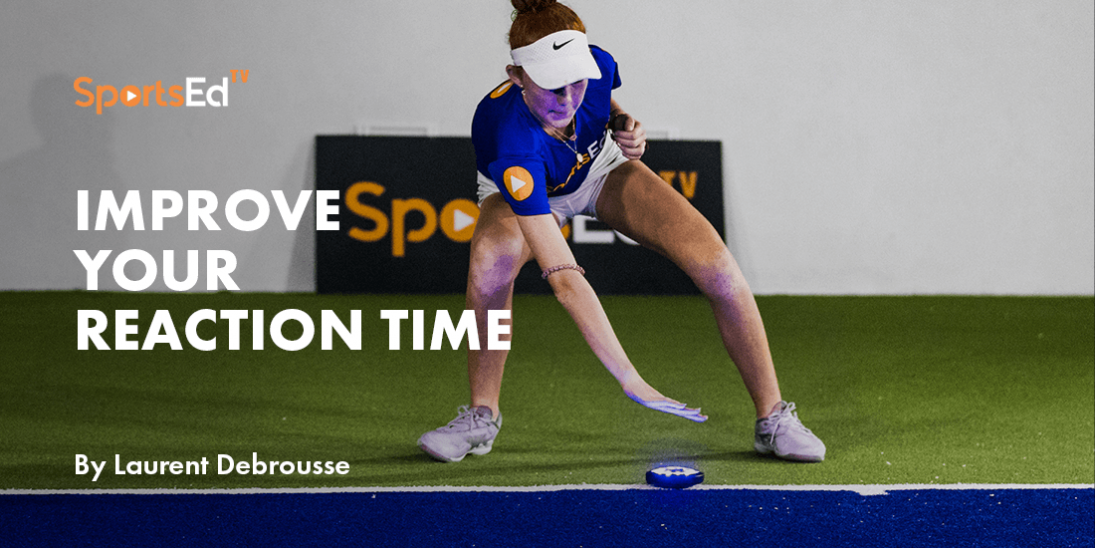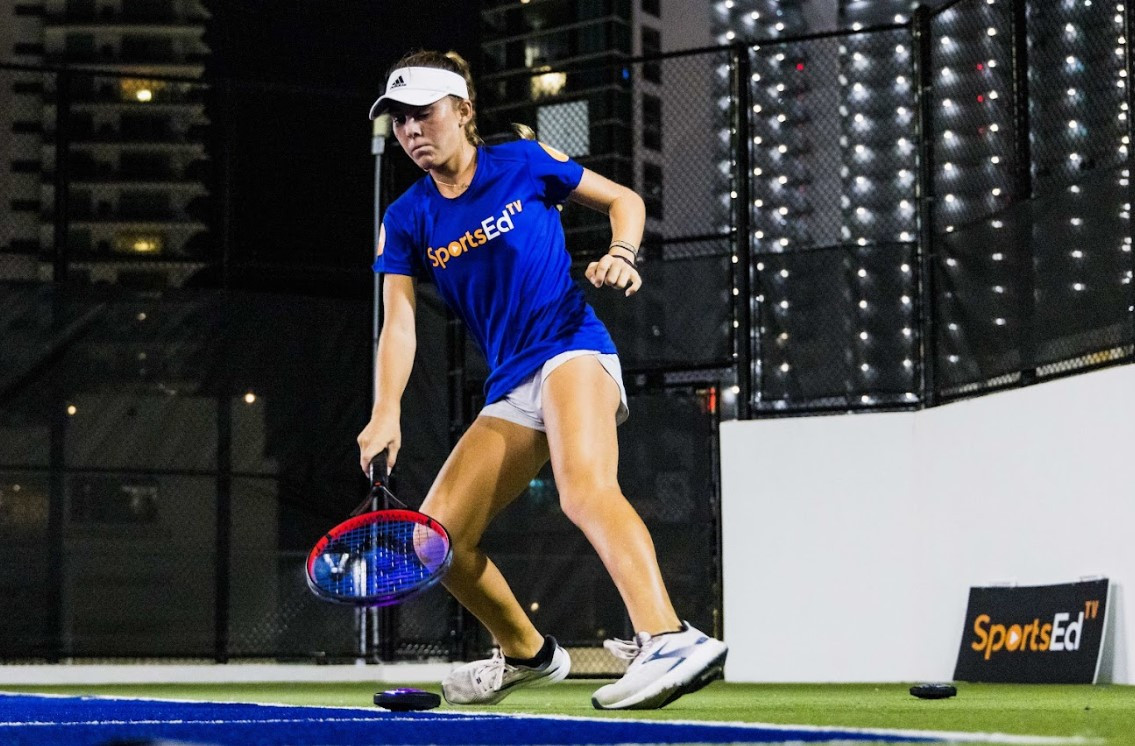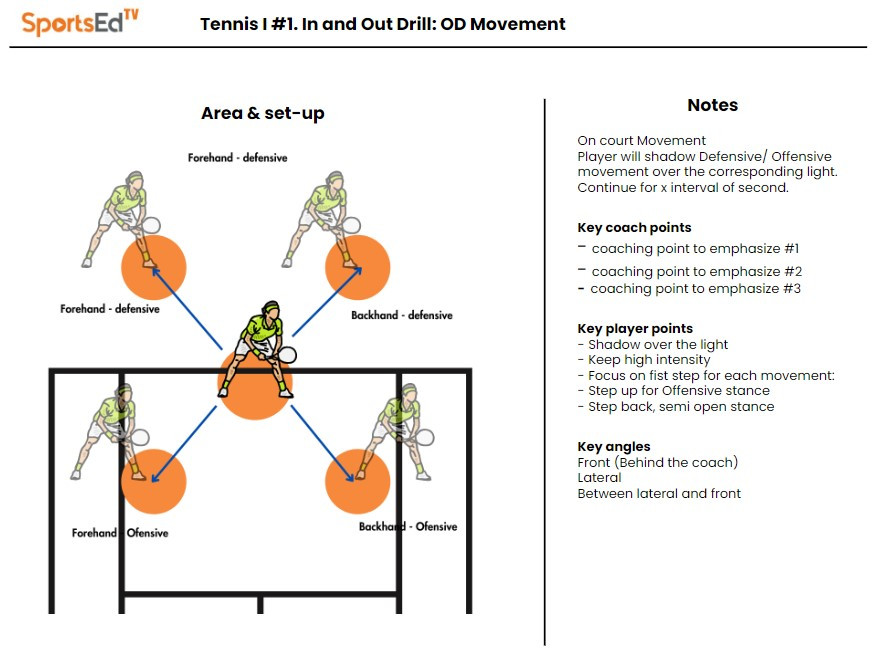Tennis
Welcome and thanks for visiting...

Improve your reaction time in tennis

Reaction time in tennis is the time it takes for a player to recognize and respond to a stimulus, such as an opponent's shot or movement on the court. It is an important component of a player's overall agility and can have a significant impact on their ability to perform well on the court. A player with fast reaction time can quickly adjust to an opponent's shots, move more efficiently on the court, and be better positioned to make winning shots. There are various drills and training methods that can be used to improve reaction time in tennis, including reactive agility training with tools such as the FITLIGHT system.
Linear speed, agility, and reaction time are related to each other.
Speed is one of the most important motor abilities in tennis, and it cannot be fully compensated by any other ability. While highly developed perceptual and anticipation abilities, as well as tactical pattern recognition, can partially compensate for lack of speed, the trend in modern tennis is towards a game that places increasing importance on speed. This trend can be seen on both the ATP and WTA Tours, as well as the ITF Junior Tour, where players with exceptional speed have a distinct advantage over their opponents. As such, developing speed is a key focus for many tennis players and coaches, and new training methods like reactive agility training have emerged to help players achieve this goal. In this blog, we will explore the benefits of reactive agility training in tennis, with a particular focus on the use of the FITLIGHT system.
What are speed and agility?
Speed, which refers to an athlete's ability to move quickly from one location to another, is a crucial factor in determining tennis performances in competition. In addition to movement speed, acceleration speed, reaction speed, frequency speed, and single movement acceleration are also important features to consider. Meanwhile, agility can be defined as the motor ability to carry out different types of movements, including changes in direction. While traditional definitions of agility have focused on speed in directional changes, recent research has recognized the importance of cognitive skills in determining agility performance.
Reactive Agility Training
Reactive agility training is a method of training that involves reacting to external stimuli, such as lights or sounds, to improve an athlete's ability to move and change direction quickly and efficiently. The goal of reactive agility training is to develop better movement patterns, improve reaction time, increase agility, and ultimately enhance overall athletic performance.
In tennis, reactive agility training is used to help players quickly react and move to different positions on the court, improving their on-court efficiency and effectiveness. The goal is to help tennis players become more efficient and effective in their movements, which can lead to better performance on the court.
Reactive agility training can also help to prevent injuries in tennis players. By improving a player's overall movement patterns and agility, they are less likely to experience strains, sprains, and other common injuries associated with the sport. Additionally, by focusing on movement efficiency, players can reduce the risk of overuse injuries that can result from repetitive movements on the court.
The use of reactive agility training in tennis is becoming more popular among coaches and players because it can help players to develop better movement patterns, improve their reaction time and agility, and increase their overall fitness level.
Why FITLIGHT in tennis?

There are several methods that can be used to improve reactive agility in tennis players, such as ladder drills, cone drills, and reaction ball drills. However, the integration of the FITLIGHT system has become increasingly popular in recent years due to its ability to make training more fun, efficient, and measurable. FITLIGHT provides a unique way to simulate game-like scenarios and challenge players to react quickly to different stimuli on the court. The system allows for the tracking of progress, providing coaches and players with data to monitor and adjust training programs. By making reactive agility training more engaging and measurable, FITLIGHT can help tennis players develop their skills and improve their overall performance.
The use of FITLIGHT in tennis can also help players improve their coordination, footwork, and overall endurance. This is because the system can be set up to include a variety of drills and exercises that challenge players both physically and mentally. By using the system to train, players can develop better overall fitness levels and become more prepared for the demands of competitive play.
FITLIGHT drill example for tennis players

In summary, reactive agility training is a valuable tool for tennis players looking to improve their overall performance. By using tools like the FITLIGHT system, players can develop better movement patterns, improve their reaction time and agility, and increase their overall fitness level. This type of training can also help to prevent injuries and keep players healthy and ready for competition.








